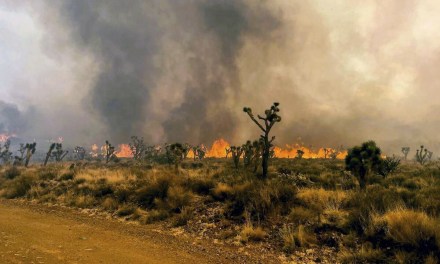“I’m telling you, 15 or 20 years from now, football is going to be a spring sport,” Douglas Casa, CEO of the Korey Stringer Institute based at the University of Connecticut told ESPN recently. “We’re not gonna get people out on August 1, the hottest time of the year in America, the most humid time, in full gear with 300-pound linemen training in the worst conditions possible. … If I started this all over again 100 years ago, I would’ve had football as a spring sport and baseball be the fall sport.”
Is the nation’s heat wave putting high school football players at risk of heat stroke?
The changing climate is becoming a significant concern among sports enthusiasts, particularly football players. Heat illness is already a prevalent issue, even among professional athletes and more so among younger athletes in the United States. With this summer’s warmer temperatures and the emergence of heatwaves and wildfires in some regions, sports experts are starting to wonder if football will soon become a spring sport rather than a fall sport.
Football season begins in August when temperatures are at their peak in most parts of the country. When the temperature on the field nears or exceeds 100 degrees Fahrenheit, the risk of heat illness increases significantly.
Heatstroke is a severe heat-related risk that occurs when the body overheats, leading to confusion, seizures, and a potentially fatal increase in body temperature. Unfortunately, high school athletes are most susceptible to heat-related injuries, and football linemen seem to be highly targeted.
According to the National Center for Catastrophic Sports Injury Research, 67 high school athletes have died from exertional heat illness since 1982, with 52% of them passing during fall sports seasons. It’s important to note that heat-related incidents are entirely preventable with proper planning, frequent hydration, and cooling measures during training and games. However, these best practices are not yet enforced to their full potential in high school sports teams across America.
The impacts of climate change are gradually presenting new challenges to sports teams across America. Coaches and sports physicians report experiencing difficulties in adjusting training schedules and working around changing game schedules due to increased incidence of wildfires and heatwaves.
For instance, in California, teams must cancel practice when the air quality index reaches 200, constituting a more frequent occurrence in recent years. Another example in Arizona’s central valley is changing football game schedules due to high-frequency monsoons.
Football players will likely be the first to experience the effects of climate change. Still, there’s hope that preventing dangerous heat illness incidents from occurring doesn’t have to involve such drastic changes as rescheduling the entire sport’s season.
Erin Foreman, an athletic trainer with 17 years of experience in northern Indiana, has noticed an increase in interest regarding heat illness prevention among athletes and coaches. Solely assigned to Elkhart High School, Foreman considers herself fortunate for having the necessary resources to effectively support athletes. Many schools lack proper athletic trainers to manage heat stations, highlighting the inconsistent availability of these essential resources at the high school level.
“There are some schools that don’t even have athletic trainers to manage a heat station,” Foreman said. “We do have those resources. I think it’s probably hit or miss depending on if there’s an athletic trainer available to the high school or not.”
With the right steps in place, such as resistance-training, staying hydrated, and implementing heat-illness prevention guidelines like shade and hydration breaks, football players can safely continue playing the game they love.
Climate change poses significant risks to the safety of football players. Heat-related illness, particularly heatstroke, is now a prevalent issue among young athletes. To mitigate the risk, sports medical professionals should enforce proper sports safety protocols, frequent hydration, and suitable cooling measures. With the right procedures in place and awareness among both coaches and players, football teams can continue to play and enjoy the sport they love safely.






